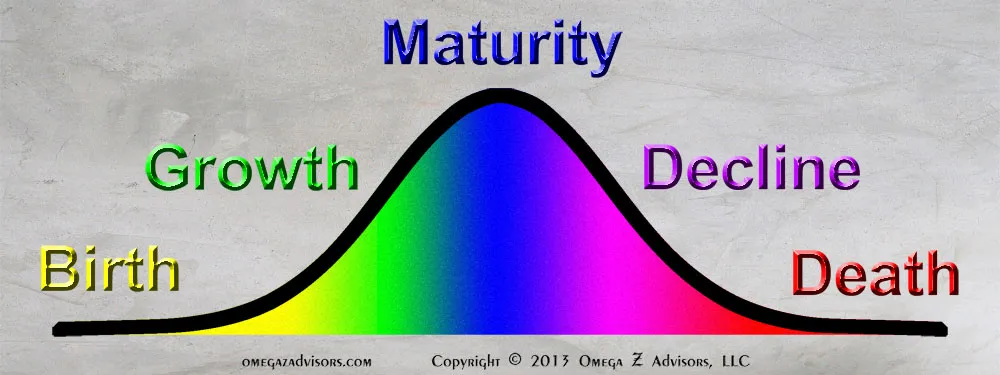Change Management Strategy #6: Company Life Cycle
The better we anticipate change the better we can position and implement it. Understanding a company’s life cycle helps us anticipate change. Using a linear perspective of change, we can define this life cycle as Birth, Growth, Maturity, Decline and Death with the curve representing revenues over this life.
Birth. The company forms from a small group of employees with job functions highly integrated. Each employee works within a loosely formed organization and performs many different functions. The major challenge is securing revenues.
Growth. The company expands. The challenge becomes establishing processes to facilitate production and service while containing costs. Job functions become more segregated and defined, giving more organizational structure.
Maturity. The company hits its stride becoming a major force in its market. Growth rates slow as its market penetration expands, but record revenues materialize. It finely tunes processes and job functions to achieve cost savings.
Decline. The market and competition change. The organizational structure, processes and job functions now become deeply ingrained habits of its culture and impediments to adapting. Layoffs and other cost reduction actions become common.
Death. Unable to adapt or to make the right changes quickly, the company contracts. Large-scale layoffs and cost reductions occur, creating a smaller enterprise or preparing it for sale.
From a change perspective, early on, companies strive to segregate, organize, process, standardize and computerize integrated human activities. As a company matures, change focuses on refinement and incremental improvements. Once past maturity, change appears as complete overhauls to serve new purposes and markets, usually as the result of mergers, acquisitions or consolidations.
While no company follows this life cycle idyllically, it helps us anticipate the kind of changes we might need to position and implement. More importantly, it helps us realize that the infrastructure helping us today will obstruct the change we seek tomorrow.
- The Strategy Of Organizing For Successful Change Management
- Change Management Strategy #2: Celebrate Anniversaries
- Change Management Strategy #3: Keywords
- Change Management Strategy #4: Change Jobs, Reduce Tenure
- Change Management Strategy #5: Two Pictures of Change
- Change Management Strategy #6: Company Life Cycle
- Change Management, The Secret
- Change Management, The Secret (Pt 2): Minority Power



Pingback : Change Management Strategy 6: Company Cycle (In...